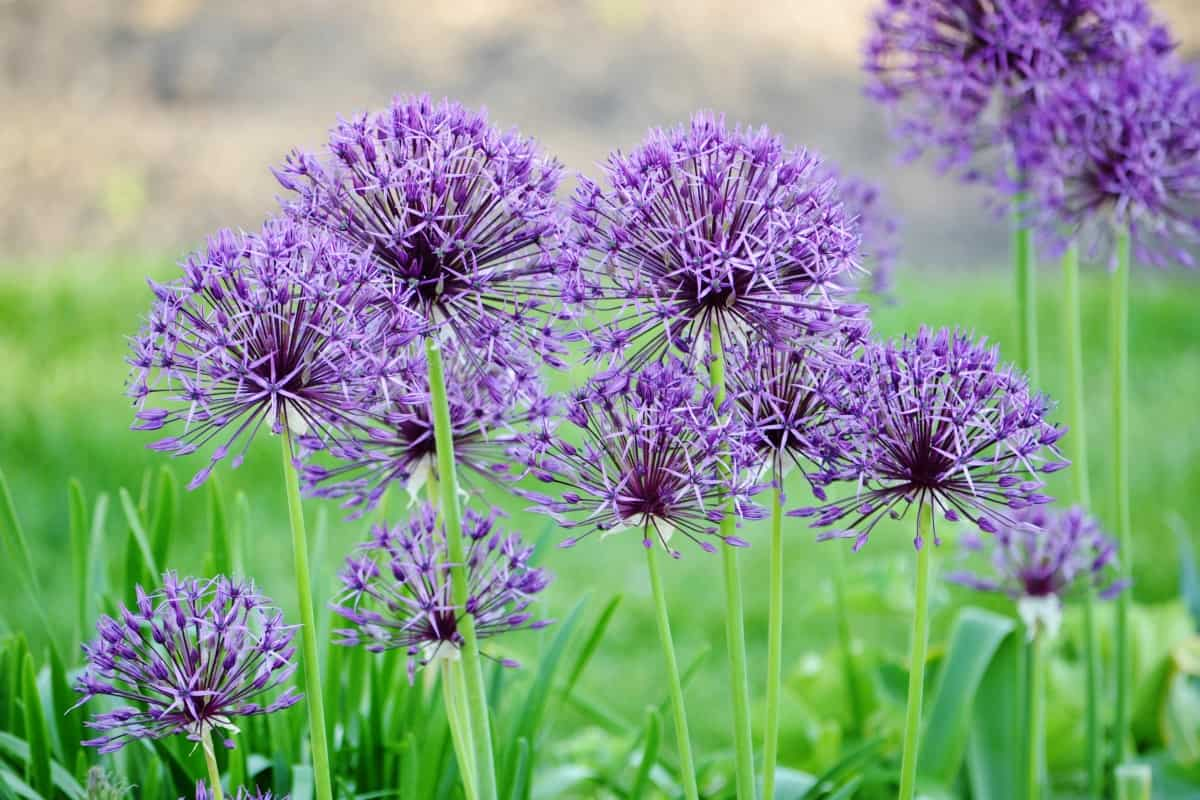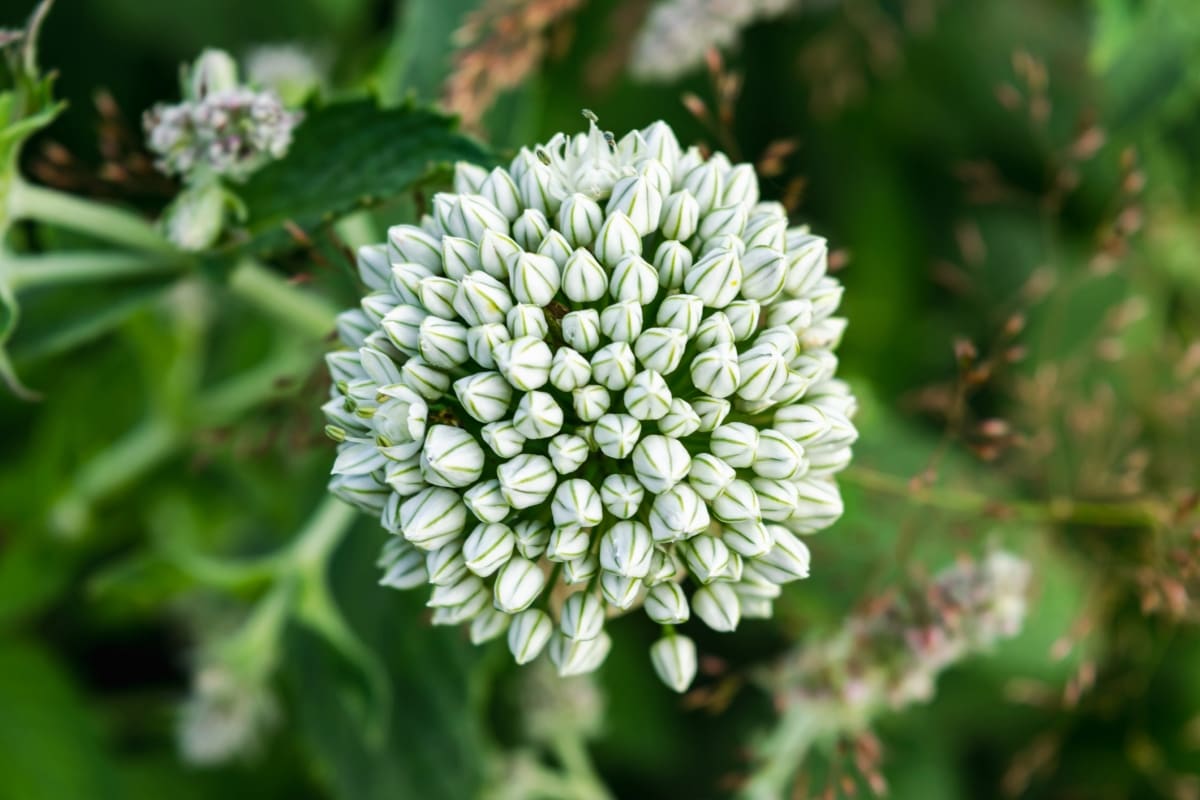Neem oil, a natural and effective solution, has gained popularity for its ability to protect allium plants from pests and diseases. This article explores the numerous benefits and methods of using neem oil, ensuring healthy growth and pest-free allium plants.

How to Use Neem Oil on Allium
Neem Oil and its Benefits for Allium Plants
Neem oil is ideal for gardeners seeking eco-friendly pest control methods. Its use in gardening is widespread due to its low toxicity to humans and beneficial insects. When considering how to use neem oil on plants, particularly alliums, it’s crucial to remember that it’s a preventative measure rather than a cure. It’s most effective when applied at the first sign of pests or disease, making it a go-to choice for gardeners looking to maintain the health of their allium plants without resorting to harsh chemicals.
How to Prepare Neem Oil to Use on Allium Plants
To prepare neem oil for use on allium plants, start by selecting a high-quality, cold-pressed neem oil, which retains most of its active ingredients. The preparation involves creating a neem oil emulsion, as neem oil does not mix well with water. To do this, mix the neem oil with a mild, non-detergent soap, which acts as an emulsifier.
For a basic mixture, combine about 2 tablespoons of neem oil with a gallon of water and a few drops of soap. It’s important to shake or stir this mixture thoroughly to ensure the oil is well distributed. Proper preparation ensures the effectiveness of the treatment and maximizes its benefits for allium plants.
How to Apply Neem Oil on Allium Plants
When applying neem oil on allium plants, it’s essential to cover both the tops and undersides of the leaves, as pests can hide in different parts of the plant. The best time for application is either early morning or late afternoon to avoid the strong sun, which can cause the oil to heat up and potentially harm the plant.
Apply the neem oil mixture evenly using a spray bottle or garden sprayer, ensuring not to saturate the plant excessively to the extent of runoff. It’s also beneficial to apply neem oil to the soil, as this can help control soil-borne larvae and pests. Consistency is key in pest management; thus, regular applications every couple of weeks can effectively manage pest populations and protect allium plants.
Mixing and Dilution for the Right Concentration of Neem Oil for Allium Plants
The correct mixing and dilution of neem oil are crucial for its effectiveness on allium plants. An overly concentrated mix can harm plants, while too dilute a mixture might be ineffective against pests. A standard recommendation involves blending 2 tablespoons of neem oil with a few soap drops in one gallon of water.
In case you missed it: How to Use Neem Oil on Columbine Plants: A Natural Way to Get Rid of Bugs from Columbine Plants

This concentration is generally safe and efficient for most allium plants. It’s crucial to conduct a preliminary test on a small plant area and wait for 24 hours to observe any negative responses. If there is no damage observed, you can then treat the entire plant. Regularly adjusting the concentration based on the severity of the pest problem and the sensitivity of the plant can yield the best results.
Can Neem Oil Be Used on All Allium Plant Varieties?
Neem oil is always prudent to perform a patch test on a small area of the plant before full application. This test helps determine if a particular allium variety shows any adverse reaction to neem oil. It’s also important to consider the plant’s stage of growth; neem oil is best used on established plants rather than seedlings, which can be more sensitive. While neem oil is a versatile and safe option for most allium varieties, it’s always best to proceed with caution and tailor the application to the specific needs of each plant.
How Long Does Neem Oil Stay Effective on Allium Plants?
The effectiveness of neem oil on allium plants typically lasts for about a week to ten days. Environmental factors like rain and temperature can influence its duration of effectiveness. After a heavy rain, it’s advisable to reapply neem oil, as the water can wash away the oil, reducing its protective qualities.
In cooler temperatures, neem oil’s effectiveness can last longer, while in hot conditions, it may break down more quickly. Regular applications, typically every one to two weeks, are recommended to maintain a protective barrier against pests and diseases. This consistent approach helps ensure that allium plants receive ongoing protection from the various threats they face.
Using Neem Oil in Combination with Other Pest Control Methods
Neem oil can enhance pest management for allium plants when combined with other methods, such as companion planting. Certain companion plants can either repel pests or attract beneficial insects, making neem oil even more effective in comprehensive pest control for alliums.
In case you missed it: How to Use Neem Oil on Sunflowers: A Natural Way to Get Rid of Bugs from Sunflower Plants

Physical barriers like row covers can also complement neem oil applications by providing an additional layer of protection. Integrating neem oil with other natural pest control strategies can create a robust defense system for allium plants, promoting healthy growth and minimizing the need for chemical pesticides.
Some Common Pests and Diseases that Neem Oil Can Control on Allium Plants
Neem oil works well against aphids, mites, and whiteflies, which are attracted to alliums and can cause significant damage. Neem oil also helps manage fungal diseases like mildew, which can affect the health of these plants. The oil’s active components interfere with the pests’ life cycle and inhibit the growth of fungi, providing a natural solution to these common problems. Regular application of neem oil can significantly reduce the incidence of these pests and diseases, ensuring healthier allium plants.
How to Monitor the Effectiveness of Neem Oil on Allium Plants
Monitoring the effectiveness of neem oil on allium plants involves regular inspection of the plants for signs of pest activity and disease. After applying neem oil, check the plants after 24 to 48 hours for any adverse reactions and then weekly for signs of pest or disease reduction. Look for changes in the number of pests, the health of the leaves, and overall plant vigor.
Keeping a record of applications and observations can be helpful in determining the effectiveness and adjusting the application frequency and concentration as needed. Consistent monitoring allows for timely interventions and helps in achieving the best protection for allium plants with neem oil.
Safety Precautions to Take when Using Neem Oil on Allium Plants
When using neem oil on allium plants, it’s important to take certain safety precautions to ensure both personal safety and the health of the plants. To prevent skin and eye irritation, it is essential to consistently use protective attire, such as gloves and protective eyewear. Apply neem oil during cooler parts of the day, such as early morning or late evening, to prevent leaf burn.
In case you missed it: How to Use Neem Oil on Camellia: A Natural Way to Get Rid of Bugs from Camellia Plants

Ensure that the area is well-ventilated, especially when applying indoors. Keep neem oil away from children and pets, and store it in a safe place. Following these safety precautions ensures a safe and effective use of neem oil, protecting both the gardener and the plants.
Conclusion
Neem oil emerges as a versatile and eco-friendly option for safeguarding allium plants against common pests and diseases. With proper application and safety measures, it stands as an indispensable tool for gardeners seeking natural plant protection solutions.
- Feed Your Flock for Less: Top 10 Tips to Save on Chicken Feed
- Ultimate Guide to Ossabaw Island Hog: Breeding, Raising, Diet, and Care
- Hatching Answers: The Top 10 Reasons Your Chickens Aren’t Laying Eggs
- Eggs and Economics: Breaking Down the Cost of Raising Backyard Chickens
- Defend Your Greens: Proven Methods to Keep Iguanas Out of Your Garden
- Ultimate Guide to Cinnamon Queen Chicken: A Comprehensive Guide for Beginners
- Ultimate Guide to California Tan Chicken: Breeding, Raising, Diet, Egg-Production and Care
- Ultimate Guide to Marsh Daisy Chicken: Breeding, Raising, Diet, and Care
- 10 Types of Chicken Farming Businesses You Can Start for Profits